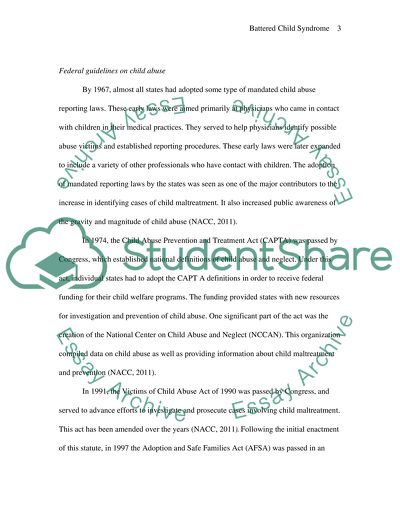Cite this document
(“Battered Child Syndrome Term Paper Example | Topics and Well Written Essays - 1500 words”, n.d.)
Retrieved from https://studentshare.org/law/1436987-battered-child-syndrome
Retrieved from https://studentshare.org/law/1436987-battered-child-syndrome
(Battered Child Syndrome Term Paper Example | Topics and Well Written Essays - 1500 Words)
https://studentshare.org/law/1436987-battered-child-syndrome.
https://studentshare.org/law/1436987-battered-child-syndrome.
“Battered Child Syndrome Term Paper Example | Topics and Well Written Essays - 1500 Words”, n.d. https://studentshare.org/law/1436987-battered-child-syndrome.


